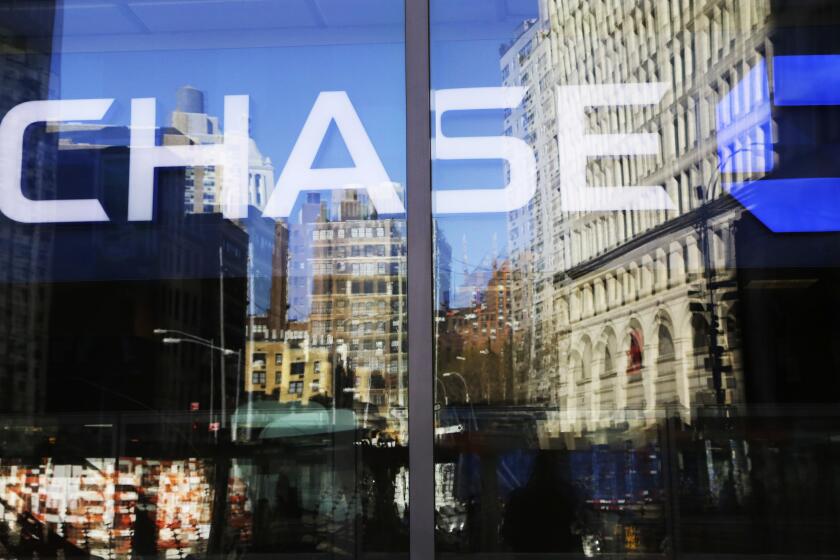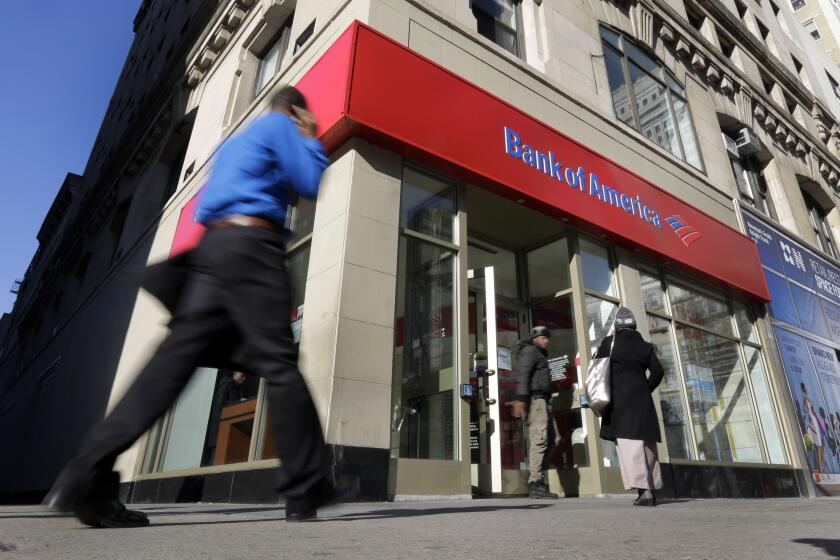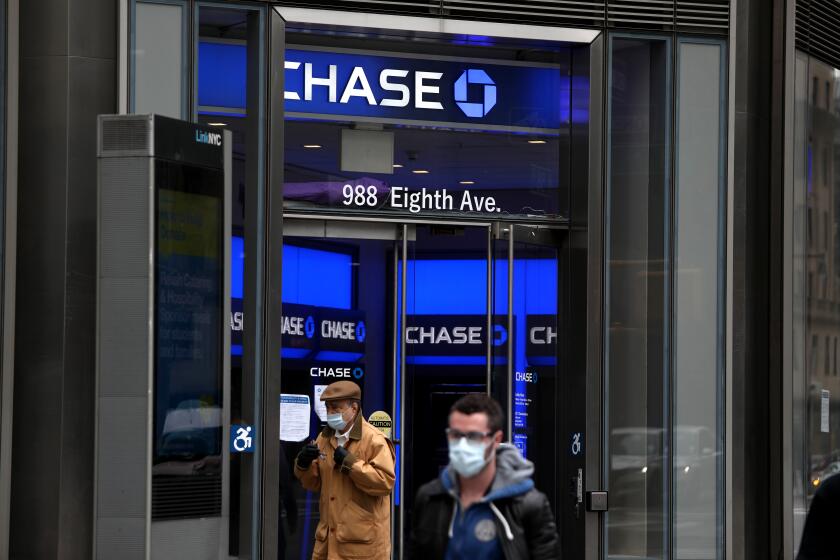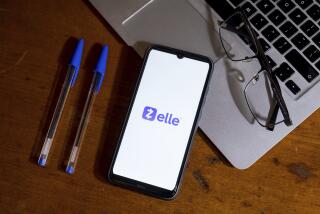Column: Here’s what happened after $1,200 was drained from an 11-year-old’s bank account

- Share via
Noah Golden opened an account at Chase bank in 2017 for his then-6-year-old daughter. The idea was to gradually deposit funds and then present her with the windfall when she turns 18.
Golden, 41, seldom monitored the account. Year after year, he just kept putting cash into it.
It wasn’t until recently the Woodland Hills resident discovered that, on dozens of occasions, someone else — not his daughter — was taking money out.
This is one of numerous horror stories I received in response to last week’s column on Chase’s failure to prevent an 81-year-old customer from wiring more than $600,000 to an overseas scammer.
A scammer compelled an 81-year-old woman to wire more than $600,000 overseas within a span of days. Chase bank did little to stop the fraud.
In that case, Chase says it followed all its security protocols, including asking the woman if she was sure she wanted to make the transactions. (The bank didn’t know the scammer was listening in the whole time via the woman’s cellphone.)
A number of readers shared similar experiences involving elderly loved ones and banks that didn’t seem interested in going the extra mile to protect customers from fraud. Some of these incidents involved Chase, some involved other big banks.
Golden’s story jumped out because it involved a child and because it’s a pretty stunning example of a bank placing short-term financial interest ahead of long-term customer loyalty.
In response to Chase’s refusal to restore even a portion of his daughter’s money, Golden said he closed his five Chase accounts and moved about $160,000 in assets to another bank.
“I was amazed,” he told me. “They showed no remorse whatsoever. I even placed my daughter on the phone with them. They told her they couldn’t help.”
Chase says it can’t confirm that a bank worker spoke with the girl. But Golden’s daughter, now 11, told me the exchange did occur.
“I said I was very sad that they couldn’t do anything,” the sixth-grader recalled. “They said it was my problem, not theirs. I was crying.”
The classic stereotype of bankers is that they’re hardhearted. Think Mr. Potter from “It’s a Wonderful Life.”
But what kind of bank worker reduces a young girl to tears and isn’t sufficiently moved to try to restore at least some of the missing funds?
After an Alhambra man’s death, his family struggled for months to get Bank of America to hand over $24,000 left in his checking account.
Golden said he discovered the fraudulent transactions last month while doing routine year-end financial housekeeping.
Between January and November of last year, he said, someone made about 30 separate withdrawals from his daughter’s account.
It typically happened one day each month, with two or three withdrawals made on each occasion. Most were for small amounts, $20 here, $30 there. The largest single-day hit was for $360.
“I think they were doing these minuscule amounts to avoid drawing attention and to keep the account active,” Golden said.
In total, the fraudster drained about $1,200 from the Chase account and transferred all the money to a PayPal account.
Golden said PayPal confirmed having received the funds but said there was nothing more it could do without a court order.
“If it was my money, OK,” he said. “But for an 11-year-old girl, this should never happen.”
Golden laid out the problem for Chase and was told the bank would investigate. It didn’t take long for Chase to conclude that, as it apparently told the little girl, this wasn’t the bank’s problem.
That’s because of a rule that all suspicious activity must be reported within 60 days of the transaction, it said.
Golden replied that he wasn’t aware of any such rule. It’s in the contract, Chase countered.
It is. On page 13 of Chase’s 25-page deposit account agreement, I found this:
“If your statement shows electronic funds transfers that you did not make, tell us right away. If you do not tell us within 60 days after the statement was sent or otherwise made available to you, you may not get back any money you lost after the 60 days if we can prove that we could have prevented the transactions if you had told us in time.”
Wells Fargo had found a way to charge some of its customers $30 to transfer funds from one division of the bank to another when paying off a mortgage.
So let’s be clear: Chase did nothing wrong. It set rules for situations like this and it followed them.
In fact, Golden said the bank refunded $20 withdrawn by the fraudster on Jan. 1 of this year, after he lodged his complaint.
Even so, there’s following rules and then there’s doing right by a long-term customer.
Golden said he’s been banking with Chase for 15 years. As noted above, he had five accounts at the bank containing roughly $160,000.
Does any business really want to jeopardize such a relationship? There’s absolutely no room for compromise, especially considering the circumstances?
A day after I contacted Chase this week, Golden said he received a call from the bank saying it was reopening the investigation it had closed.
How did an identity thief get $19,000 from a SoCal man’s account? Easy. Chase bank gave it to him in the form of overdraft protection.
Chase told me Thursday afternoon it’s now partially reimbursing Golden for the missing funds.
“This is an unfortunate situation,” a bank spokesperson said by email. “However, protecting a customer’s account must be a partnership between the bank and the customer.
“We monitor accounts continually and need customers to do the same, especially with accounts for minors. The sooner the customer contacts us to report suspicious activity on an account, the sooner we can help. Unfortunately, reporting fraud 10 months later doesn’t help stop it.”
He’s right. For consumers, a key takeaway here is to be diligent in overseeing your financial accounts. More often than not, if you don’t spot a questionable transaction, no one will. And then it may be too late to fix things.
Also, and I know this is asking a lot, read the contracts. Many of us might reasonably conclude that it’s unfair to bury important terms deep within a 25-page document.
But that’s how the game’s played. As long as a business discloses its rules, it’s largely off the hook when the you-know-what hits the fan. Buyer beware and all that.
That said, Chase bank’s corporate parent, JPMorgan Chase, earned $11.7 billion in profit in the third quarter of last year. And these guys really wanted to play hardball with an 11-year-old girl?
I asked Golden’s daughter if there was a chance she’d be a Chase customer when she grows up.
“No,” she answered without hesitation.
That’s the sort of thing all businesses should take note of. People remember the companies that treated them well.
And they remember the ones that didn’t.
Despite several signs of suspicious activity, Chase bank did nothing to prevent a scammer from raiding a Southern California couple’s checking account.
More to Read
Inside the business of entertainment
The Wide Shot brings you news, analysis and insights on everything from streaming wars to production — and what it all means for the future.
You may occasionally receive promotional content from the Los Angeles Times.
















